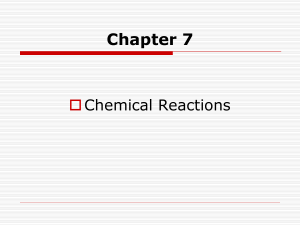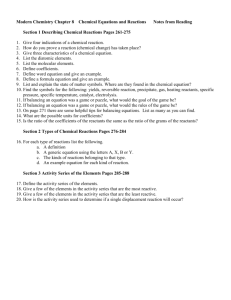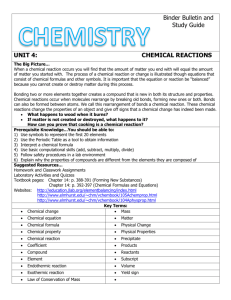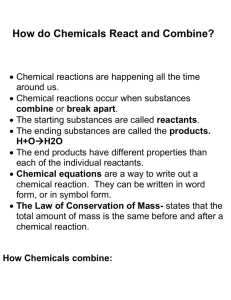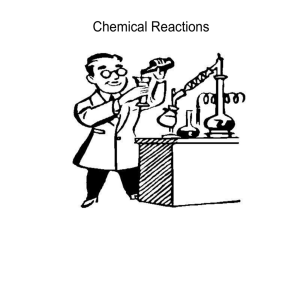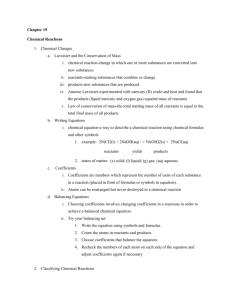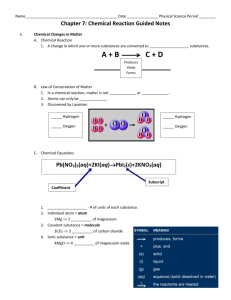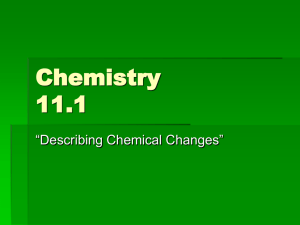Chapter 21- Chemical Reactions
advertisement
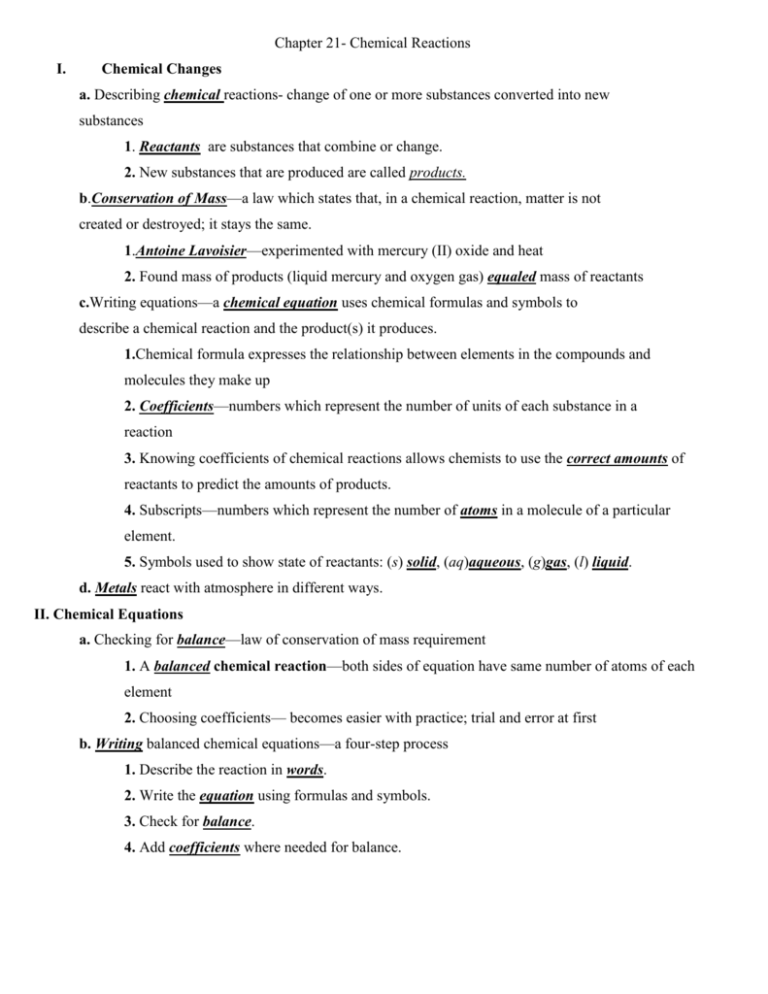
Chapter 21- Chemical Reactions I. Chemical Changes a. Describing chemical reactions- change of one or more substances converted into new substances 1. Reactants are substances that combine or change. 2. New substances that are produced are called products. b.Conservation of Mass—a law which states that, in a chemical reaction, matter is not created or destroyed; it stays the same. 1.Antoine Lavoisier—experimented with mercury (II) oxide and heat 2. Found mass of products (liquid mercury and oxygen gas) equaled mass of reactants c.Writing equations—a chemical equation uses chemical formulas and symbols to describe a chemical reaction and the product(s) it produces. 1.Chemical formula expresses the relationship between elements in the compounds and molecules they make up 2. Coefficients—numbers which represent the number of units of each substance in a reaction 3. Knowing coefficients of chemical reactions allows chemists to use the correct amounts of reactants to predict the amounts of products. 4. Subscripts—numbers which represent the number of atoms in a molecule of a particular element. 5. Symbols used to show state of reactants: (s) solid, (aq)aqueous, (g)gas, (l) liquid. d. Metals react with atmosphere in different ways. II. Chemical Equations a. Checking for balance—law of conservation of mass requirement 1. A balanced chemical reaction—both sides of equation have same number of atoms of each element 2. Choosing coefficients— becomes easier with practice; trial and error at first b. Writing balanced chemical equations—a four-step process 1. Describe the reaction in words. 2. Write the equation using formulas and symbols. 3. Check for balance. 4. Add coefficients where needed for balance. III. Classifying Chemical Reactions a. Synthesis reaction—two or more substance form a new substance A + B →AB b. One substance breaks down into two or more substances in a decomposition reaction; AB → A + B c. Single-displacement reaction—one element replaces another one in a compound; A + BC → AC + B d. A double- displacement reaction results if a precipitate, water, or a gas forms when two ionic compounds in solution are combined AB + CD → AD + CB IV. Chemical Reactions and Energy a. Chemical reactions involve energy exchange. 1. Breaking chemical bonds requires energy. 2. Forming chemical bonds releases energy. b. More energy out 1. Exergonic Reactions—energy required to break bonds is less than the energy released from new bonds; energy given off is usually light. 2. Exothermic reactions—energy given off in the form of heat c. More energy in 1. Endergonic reactions—more energy is required to break bonds than to form new ones; need energy for the reaction to occur 2. If energy needed is heat, the reaction is endothermic. 3. A catalyst speeds up a chemical reaction without itself being permanently changed. 4. An inhibitor prevents or slows a chemical reaction or interferes with a catalyst’s action. Meeting Individual Needs Note-taking Worksheet (continued) eting Individual Needs Note-taking Worksheet
